Means for Black America
is the second topic in the Project 21 series:
WHAT IT MEANS FOR BLACK AMERICA
Written by Project 21 Co-Chairmen
HORACE COOPER | STACY WASHINGTON | COUNCIL NEDD II
Project 21 is a division of the NATIONAL CENTER FOR PUBLIC POLICY RESEARCH, a non-profit, non-partisan educational foundation based in Washington, D.C.
PROJECT 21 • WHO WE ARE
Project 21 is an initiative of the National Center for Public Policy Research launched in 1992 to promote conservative and libertarian black leaders in the media so that news coverage better reflects the true diversity of thought within the black community.
Project 21 members have been interviewed over 50,000 times — currently averaging more than two television interviews each day — appearing on FNC, CNN, C-SPAN, MSNBC, NewsMax and OANN. In addition, Project 21 members are interviewed on radio an average of nearly 1.5 times per day and have appeared on major radio stations and shows such as the Rush Limbaugh Show, Sean Hannity and Jim Bohannon. Members are also frequently published and quoted in newspapers, including the New York Times, Wall Street Journal, Washington Post, Washington Times, Detroit News, Houston Chronicle and many others.
Project 21 members come from all walks of life and from all over the country. Its membership includes members of the clergy, business leaders, entertainers, athletes, economists, journalists, attorneys and students.
What Project 21 members have in common is a desire to make America a better place for black Americans — and all Americans — to live and work.
They do so not only by writing op-eds and participating in radio and TV interviews on the most important issues of the day, but also by advancing a positive vision for improving the lives of black Americans. Project 21 publishes the “Blueprint for a Better Deal,” a series of publications offering specific policy recommendations for helping black America reach its full potential. Notably these recommendations build on key aspects of Americanism — free enterprise, personal responsibility and limited government — and consequently would result in benefits for the country, not just blacks. It also publishes the “What it Means for Black America” series of monographs that assess policy initiatives for their specific impact on people of color.
Project 21 members also give speeches before student, community, business and religious groups; testify before Congress and other government bodies; advise policymakers at the national, state and local level and file public comments on federal rulemakings.
PROJECT 21 • LEADERSHIP
CO-CHAIRMEN
HORACE COOPER
In addition to co-chairing Project 21, Horace Cooper is a senior fellow and member of the board of directors of the National Center for Public Policy Research. He previously served as deputy director of Voice of America, chief of staff at the U.S. Department of Labor and was a senior aide to the leadership of the U.S. House of Representatives. He also taught constitutional law at George Mason University School of Law. He is the author of “How Trump is Making Black America Great Again.” He appears regularly on the Fox News Channel and talk radio shows across the nation as a legal and political commentator.

STACY WASHINGTON
Stacy Washington is host of “Stacy on the Right” on SiriusXM satellite radio. She authored the upcoming book “Eternally Cancel Proof – A Guide for Courageous Christians Navigating the Political Battlefront.” She is an Emmy-nominated TV personality, and a veteran of the U.S. Air Force. She is also a former elected school board member in Missouri. During the 2020 presidential campaign, she co-chaired Black Voices for Trump and Veterans for Trump. Stacy is a regular guest on Newsmax, the Fox News Channel on talk radio. An avid defender of gun rights, she was named the 2nd Amendment Foundation’s Journalist of the Year and was featured on the cover of NRA’s America’s First Freedom magazine.

BISHOP COUNCIL NEDD II
The Right Reverend Council Nedd II, Ph.D. serves as Rector of St. Alban’s Anglican Church in Pine Grove Mills, Pennsylvania and is a Pennsylvania State Constable for Ferguson Township. He is the author of several books, including “Does America Hate God? Faith Under Fire” and “Teach Me How to Pray: A Guide to Family Prayer.” Council was consecrated as the Bishop of the Chesapeake in 2005. He was named “Constable/Marshall of the Year” by the National Constable and Marshalls Association in 2021. He previously worked on political campaigns, as a congressional staffer and is a former history teacher in a Washington, D.C. charter school.

What “Environmental Justice”
Means for Black America
On April 7, 2021, in a directive to his colleagues, U.S. Environmental Protection Agency (EPA) Administrator Michael S. Regan announced the Biden Administration’s commitment to what is known as “environmental justice” (EJ):
Too many communities whose residents are predominantly of color, Indigenous or low-income continue to suffer from disproportionately high pollution levels and the resulting adverse health and environmental impacts. We must do better. This will be one of my top priorities as Administrator, and I expect it to be one of yours as well.1
What exactly is environmental justice, a federal program now well into its third decade? And can it accomplish what its proponents say it can?
EPA says environmental justice “is the fair treatment and meaningful involvement of all people regardless of race, color, national origin or income with respect to the development, implementation and enforcement of environmental laws, regulations, and policies.
Fair treatment means no group of people should bear a disproportionate share of the negative environmental consequences resulting from industrial, governmental and commercial operations or policies.”2
The agency explains that meaningful involvement of EJ-related policies requires that:
- People have an opportunity to participate in decisions that may affect their environment and/or health;
- The public’s contribution can influence the regulatoryagency’s decision;
- Community concerns will be considered in the decision-making process; and
- Decision-makers will seek out and facilitate the involvement of those potentially affected.3
This is the official explanation of environmental justice. But like so many things that originate and flourish in Washington, what is for public consumption bears scant resemblance to the underlying reality.
In truth, EJ is a political tool employed by predominantly white elites strategically placed in the upper echelons of the federal bureaucracy, mostly at EPA. Under the guise of protecting racial minorities from being disproportionately exposed to environmental hazards, these unelected and unaccountable elites promote policies that make those minorities wards of the state, thereby denying them full participation in society.
The American public remains largely unaware of EJ, enabling the officials administrating the program to operate with little scrutiny.
Over the years, EPA has quietly disbursed untold millions of dollars in EJ grants to allied organizations in minority communities around the country. These are ties that bind, creating a formidable force that can oppose any commercial development at odds with what EPA deems to be in the best interest of those communities.
Most recently, arguments in favor of EJ have crossed the line into the toxic world of critical race theory (CRT), deepening the culture of victimhood and resentment on which that doctrine thrives.
As such, EJ, with all its humanitarian pretensions, has become an effective agent for widening the sociopolitical rifts that already threaten the cohesion of American society.
Environmental Justice, with all its humanitarian pretensions, has become an effective agent for widening the sociopolitical rifts that already threaten the cohesion of American society.
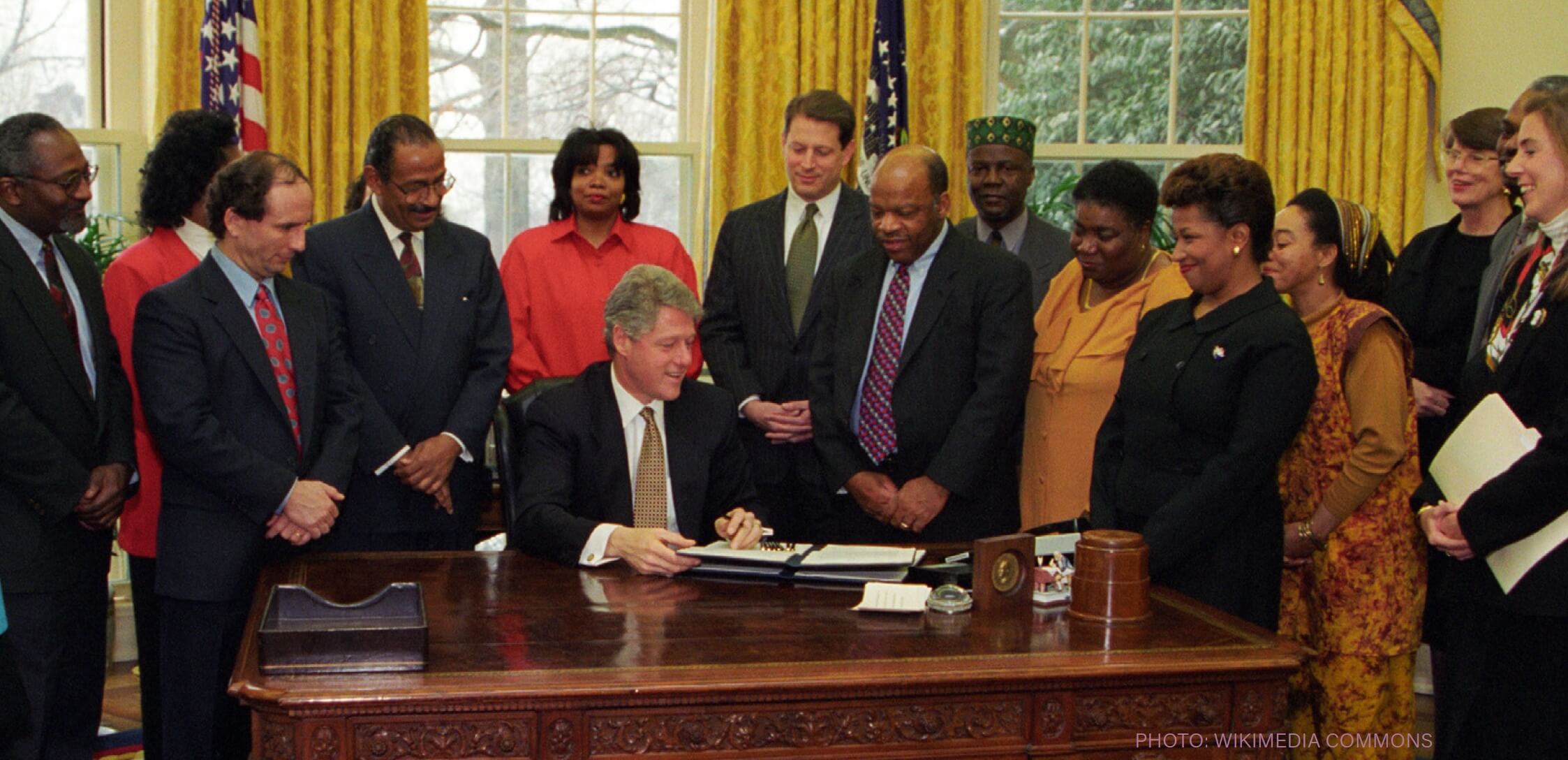
The Origins of Environmental Justice
Environmental justice as federal policy dates back to the Clinton Administration. President Clinton’s EPA Administrator, Carol Browner, was a political ally of Vice President Al Gore, and it was Browner, in close coordination with the White House, who launched and guided the nation’s first EJ initiatives.
The first official act of federal EJ policy was Clinton’s Executive Order (EO) 12898. Issued on February 11, 1994, (pictured above). The EO directed federal agencies to develop environmental justice strategies to address “disproportionately high and adverse human health or environmental effects of [their] programs… on minority populations and low-income populations.”
Clinton’s EO also created a Federal Interagency Working Group on Environmental Justice (EJ IWG), chaired by the EPA administrator and composed of 11 departments or agencies and several White House offices.4 Since its creation, the EJ IWG has grown to include 17 agencies and meets on a monthly basis to coordinate government-wide efforts.5
To meet the objectives of Clinton’s EO, EPA reinterpreted its existing statutory authority to consider and address environmental justice concerns. The affected laws encompass the breadth of the agency’s activities, including permitting, setting standards, grant making, review of the actions of other federal agencies and licensing and regulation.
To meet the objectives of Clinton’s EO, EPA reinterpreted its existing statutory authority to consider and address environmental justice concerns. The affected laws encompass the breadth of the agency’s activities, including permitting, setting standards, grant making, review of the actions of other federal agencies and licensing and regulation.
In recasting existing laws to meet EJ objectives, EPA considers a variety of factors that include public health, cumulative impact, social costs and welfare impacts.
Every EPA regional and headquarters office has an environmental justice coordinator who serves as the focal point within that organization. “This network of individuals,” EPA’s website explains, “provides outreach and educational opportunities to external, as well as internal, individuals and organizations.”6
All of this was done with little fanfare and with no input from Congress. Browner essentially created the program out of whole cloth, including the establishment of an Office of Environmental Justice (OEJ) within EPA.
While there was no legislation authorizing any of this, in the 28 years since the release of the initial Clinton EO, lawmakers and successive administrations have funded EJ programs through the appropriations process year after year. It is a testament to the strength of the administrative regulatory state that such a far-reaching program could be established unilaterally by political appointees and allowed to flourish unchallenged for over two and one-half decades.
The Biden Administration Embraces EJ
From the outset, the Biden Administration recognized the potential of EJ to help propel its regulatory agenda, especially its climate policies. EJ provisions were included in President Biden’s sprawling EO 14008, issued on January 27, 2021, just a few days after he took office. EO 14008 is entitled “Tackling the Climate Crisis at Home and Abroad,” and, among its many provisions, includes Sec. 219, which addresses EJ.
Key provisions of Sec. 219 read as follows:
To secure an equitable economic future, the United States must ensure that environmental and economic justice are key considerations in how we govern. That means investing and building a clean energy economy that creates well-paying union jobs turning disadvantaged communities — historically marginalized and overburdened — into healthy, thriving communities and undertaking robust actions to mitigate climate change while preparing for the impacts of climate change across rural, urban and Tribal areas. Agencies shall make achieving environmental justice part of their missions by developing programs, policies and activities to address the disproportionately high and adverse human health, environmental, climate-related and other cumulative impacts on disadvantaged communities, as well as the accompanying economic challenges of such impacts.7
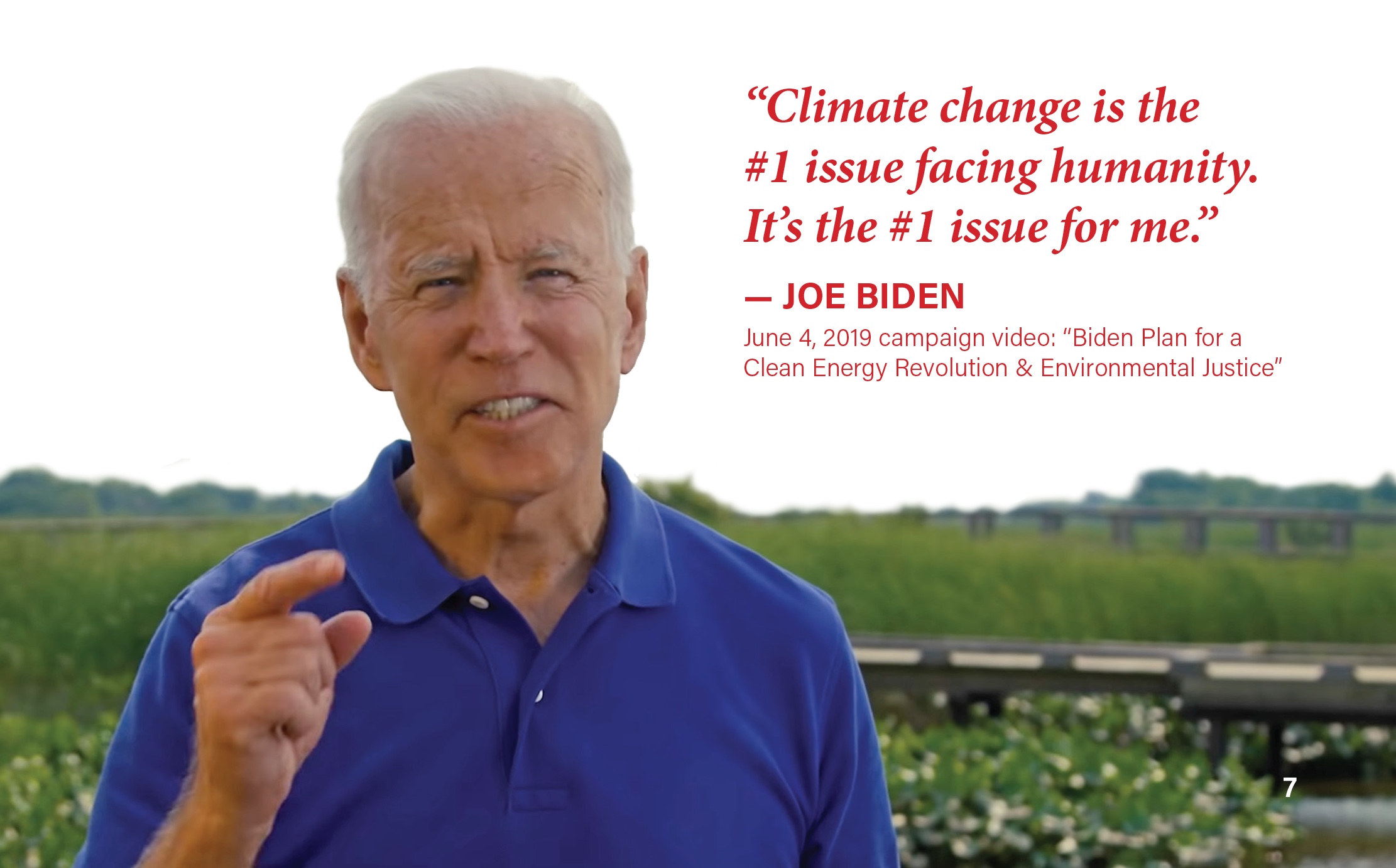
In response, EPA Administrator Michael Regan instructed his agency’s offices to:
- [s]trengthen enforcement of violations of cornerstone environmental statutes and civil rights laws in communities overburdened by pollution;
- [t]ake immediate… steps to incorporate environmental justice considerations into their work … in regulatory development processes…
- [t]ake immediate and affirmative steps to improve early and more frequent engagement with pollution-burdened and underserved communities… [and]
- consider and prioritize direct and indirect benefits to underserved communities in the development of requests for grant applications and in making grant award decisions, to the extent allowed by law.8
The EO also created two new White House councils — the White House Environmental Justice Interagency Council and the White House Environmental Justice Advisory Council — to address EJ implementation and solicit “expert advice’ and recommendations.”
Further underscoring the White House’s commitment to environmental justice, increased funding for EJ-related programs was included in the $1.9 trillion American Rescue Plan signed by President Biden in March 2021. That law appropriated $100 million to EPA to address health outcome disparities from pollution and the COVID-19 pandemic. Another $50 million went to EPA grants, contracts and other activities with the goal of identifying and addressing disproportionate harms and risks to minority and low-income populations. An additional $50 million was designated for EPA grants and activities to monitor and improve air quality.9
On June 25, 2021 EPA announced that 13 state, local and tribal agencies would receive the first $50 million in EJ grant funding from the American Rescue Plan. The taxpayer dollars were disbursed to such projects as:
- City of Milwaukee, Wisconsin — for outreach and education through a Healthy People, Homes and Neighborhood campaign
- Public Health — Seattle and King County, Washington — for community health worker training on healthy homes and home assessments
- Virginia Department of Environmental Quality — for developing and implementing an EJ training academy and EJ map-based tool
- City of Madison, Wisconsin — to implement Intervene Against COVID-19, a public education, training and emergency planning program
The EO also calls on the chair of the White House Council of Environmental Quality (CEQ) to develop a Climate and Economic Justice Screening Tool that will “highlight disadvantaged communities.”
Such screening tools can be used for grantmaking purposes and to evaluate EJ policy outcomes. The tool will function in much the same way as various EJ screening tools at EPA have done for years.10
Additionally, Biden’s EO creates the Justice40 Initiative. This cross-agency initiative sets a goal that 40% of the overall benefits of federal spending (the EO uses the word “investment”) on “clean energy” and related areas will flow to disadvantaged communities.
As noted by the Washington, D.C. law firm Holland & Knight, the Justice40 Initiative is modeled after California’s Assembly Bill 1550, which stipulates that 25% of proceeds from the state’s Greenhouse Gas Reduction Fund go to projects located in disadvantaged communities.11
The Justice40 Initiative quickly garnered support from the Sierra Club and the Center for American Progress, with the latter group saying the plan “begins to redress the high levels of pollution, chronic disinvestment, and lack of access to capital in communities of color and low-income areas driven by discriminatory environmental, housing, infrastructure and economic policies.”12
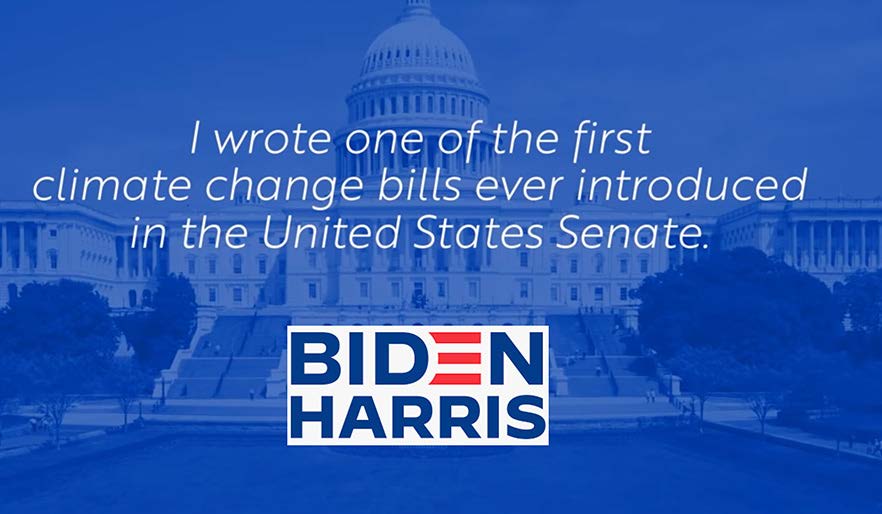
The Biden Administration recognized the potential of EJ to help propel its regulatory agenda, especially its climate policies.
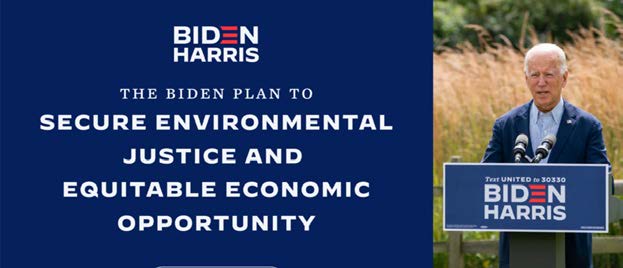
Environmental Justice Incorporates
CRITICAL RACE THEORY
The Biden EO’s EJ language is notable for several reasons, but especially in its mention of equity. The first sentence of Sec. 219 refers to the desirability of an “equitable economy.”
Equity — meaning government-directed social outcomes designed to benefit certain government-favored groups — is a key component of critical race theory (CRT), and its inclusion in the EO shows the extent to which CRT has infused the Biden administration’s policies.

Environmental Justice’s Potential
TO DO HARM
While the insertion of the word “equitable” in the Biden document was no doubt purposeful, the implications of other provisions in the EO may have escaped those who wrote it.
The pledge to create a “clean energy economy” with “well-paying union jobs turning disadvantaged communities … into healthy, thriving communities” will be difficult to square with other provisions in the same document that impose a “pause” on oil and natural gas development on federal land. It is not at all clear how lower-income people, regardless of color, are supposed to benefit from policies that are likely to lead to higher energy prices.
The same administration that pledges to bring “well-paying union jobs” to disadvantaged communities threw thousands of union workers out of their jobs last year with its cancellation of the Keystone XL pipeline.
It bears mentioning that people who lose their jobs as a result of this energy transition represent all racial and ethnic groups, including those the EJ policies are supposed to help. But this is thought to be a price worth paying, albeit one that will not be paid by those imposing the policies.

Under the Biden Administration, environmental justice has been elevated to a position of unprecedented prominence in determining the decisions of EPA, the nation’s most powerful regulatory agency. The power that has been vested in EPA over the decades to do such things as set standards, approve or disapprove permits for industrial facilities, provide funding for grants, issue licenses and regulations and review environment-related actions of other federal agencies is now power that is also vested in EJ.
EPA’s decisions affect the lives of all Americans, and, in what could be a cruel irony, its greatest impact — and it promises to be a negative impact — is likely to be on low-income minority communities, the very ones EJ is supposed to serve. These communities are already beset by daunting social problems — violent crime, high out-of-wedlock birth rates and poor public schools, just to name a few. These conditions will not be ameliorated by EJ training academies or mapping tools, the projects funded by EPA grants under this initiative.
On the contrary, Biden Administration policies that discourage, or even prohibit, job-creating businesses from locating in or near these communities will hurt prospects for revitalization of downtrodden neighborhoods. If EPA denies a permit for a manufacturing facility on the grounds that its putative climate-altering carbon emissions will have a disparate impact on people of color, it will be blocking one more avenue these people have to improve their lives.
Furthermore, many of the criteria by which EPA makes EJ-related regulatory decisions are inherently subjective and can be enlisted to serve blatantly political objectives. This applies to such terms as “public health,” “cumulative impacts,” “social costs” (as in social cost of carbon), “welfare impacts” and “climate justice.” To assume that there are purely objective criteria to which these terms can be subjected is to ignore the institutional interest a bureaucracy has to expand its influence, as well as the political nature of regulatory decision making in Washington.
While it is difficult to name any real-world improvements EJ has brought to the communities it is supposed to help, it is not hard to see how EPA and the community activist groups that have received agency grants over the years have benefitted from these transactions. When activist groups receive grants, EPA in return can count on their support for the agency’s regulatory initiatives at public hearings and elsewhere.
That mutually beneficial relationship will only be deepened if EPA’s latest budget request is eventually honored. For Fiscal Year 2022, EPA requested an additional $282 million and 172 full-time equivalent employees for its EJ program.13 “This investment will allow the Agency to develop, manage and award new competitive grants to reduce the historically disproportionate health impacts of pollution in EJ communities as well as increasing [sic] support for existing grant projects,” EPA’s website explains. “This investment also will support climate initiatives in EJ communities, and in support of EJ training, education and outreach programs. This investment will provide paramount support to community-based organi-zations, indigenous organizations, states, tribes, local governments and territorial governments in pursuit of identifying and addressing EJ issues.”14
This justification for funding “climate initiatives in EJ communities” underscores the overriding role climate policies are playing in the Biden Administration. Combatting climate change, to borrow a phrase from Al Gore, is the central organizing principle of the Biden presidency. The transition from fossil fuels to “clean energy” (predominantly wind and solar power) is fraught with technical, logistical and economic challenges, and the process will produce its share of winners and losers. Because that transition will result in higher energy prices, those standing to lose the most in this undertaking are the people who can least afford it.
America’s most vulnerable residents will bear a disproportionate burden of the transition’s cost, and a disproportionate number of these people are ethnic minorities, predominantly black, Latino, and Native American. Now that environmental justice has been enlisted into the cause of combatting climate change, the very program that is supposed to benefit these communities will now serve a larger agenda, one diametrically opposed to the best interests of lower-income Americans. While EPA’s EJ talking points may boast of public input in the agency’s regulatory decisions, these decisions are often preordained, with local EPA-funded activist groups serving as a rubber stamp within low-income neighborhoods.
Harry Jackson, a retired black U.S. Navy officer, has written of the “paternalistic White liberals determined to ‘help’ minority victims at any cost.”15 That cost will not be borne by well-paid federal bureaucrats administering EJ programs, but by EJ communities, which are little more than pawns in the larger game of transforming American society under the guise of combatting climate change. That transformation is largely being driven by “paternalistic White liberals” with nary a thought about how their agenda will affect the lives of ordinary people, much less those at the bottom of the economic ladder.
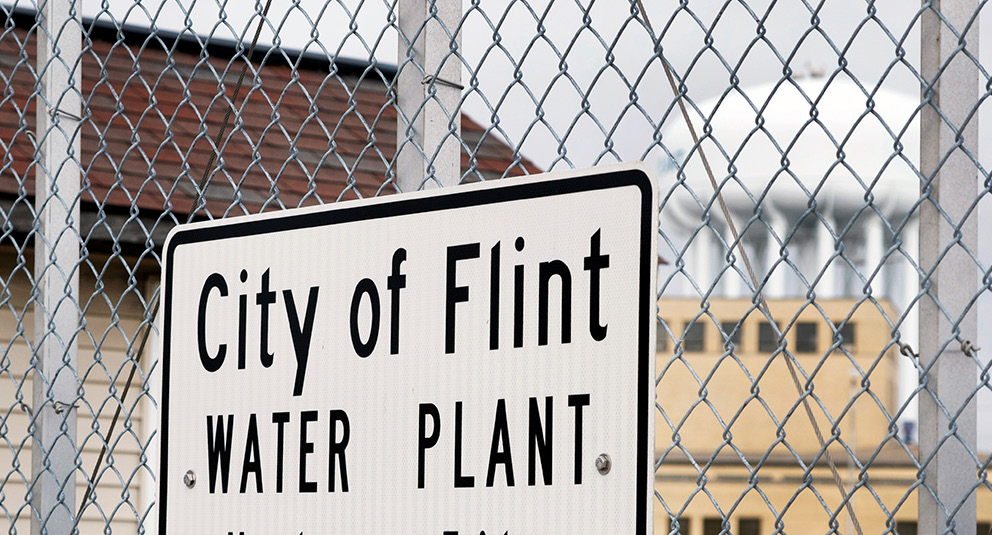
Environmental Justice and Flint, Michigan
While it is true that lower-income, predominantly minority communities can face unique environmental and health challenges, the causes are often more complex than are found in typical EJ talking points. The water contamination crisis that struck Flint, Michigan in 2015 is a case in point.
For months, the Rust Belt city’s residents were unable to drink city water because it had been contaminated by lead, a potent neurotoxin that can cause brain damage in children.
Flint’s aging, corroded underground iron water pipes had become a breeding ground for human pathogens, with the pipes corroded to the point that they undermined chlorine’s capacity to disinfect the water.
The looming disaster was ignored by city, state and federal officials until it was too late. A mid-level EPA employee warned of trouble ahead, but his words went unheeded by higher-ups at the agency.
The contaminated water was eventually linked to 72 cases of Legionnaires’ disease that resulted in 12 deaths. In the aftermath of the tragedy, EPA’s inspector general faulted the agency for its slow response to the crisis, and EPA’s regional administrator, an Obama appointee, was forced to resign.16
Indicative of how critical race theory has pervaded the liberal mindset, the Michigan Civil Rights Commission concluded that the Flint water crisis resulted from “systemic racism that was built into the foundation and growth” of the city.17
In truth, the preventable tragedy was the result of systemic incompetence by three levels of government that failed to address a problem that had been unfolding for years. The fact that EPA, the lead agency on environmental justice, played such a prominent role in the Flint disaster is a reflection of the misplaced priorities of a wasteful and flawed program.
The Flint example demonstrates the real-world consequences of public health and environmental officials not properly discharging their duty to protect the public.
A grave environmental injustice was inflicted on the residents of a majority black city at a time when federal environmental justice grants were being lavished on EJ activist groups and an assortment of governmental entities around the country.
These handouts — and that’s exactly what they are — along with EJ-driven rules, regulations, standards and permitting decisions may appear virtuous to those calling the tune.
But even for a government program, EJ falls woefully short of its goal of lifting poorer neighborhoods into a cleaner, more prosperous world. It may in fact simply perpetuate the very conditions it is supposed to eliminate.

The preventable tragedy was the result of systemic incompetence by three levels of government that failed to address a problem that had been unfolding for years.
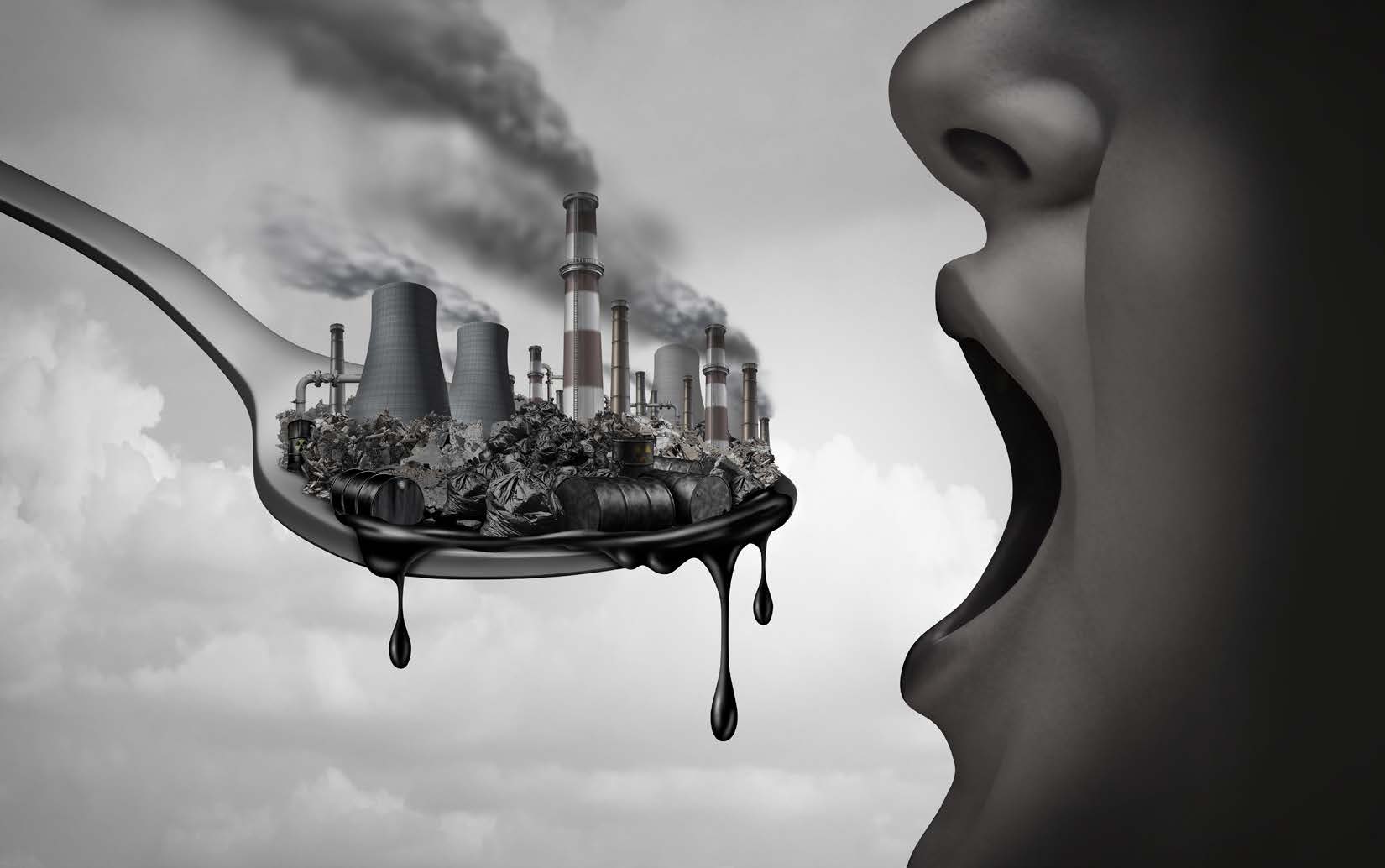
The Return of “Cancer Alley”
Flint, Michigan shows how a fixation on environmental justice can divert attention from real public-health threats to minority communities.
Similarly, unsubstantiated claims of environmental risks have be used to thwart commercial projects that could provide economic opportunities where they are needed the most.
“Cancer Alley” in Louisiana is a case in point. In the 1990s, reports of high cancer rates in parishes stretching for 85 miles along the Mississippi River led to the area being dubbed “Cancer Alley.”
Local petrochemical plants were seen as the likely cause, and the region’s substantial African American population was thought to be especially threatened by the plants’ emissions. The “Cancer Alley” narrative seemed to confirm the points Carol Browner was making at the time as she set about creating EPA’s EJ program.
But when scientists at Louisiana State University Medical Center and the Louisiana Tumor Registry took a closer look, they found that people in “Cancer Alley” did not develop cancer any more often than the residents of the rest of south Louisiana, or even the rest of the nation.
A 1998 study published by the Journal of the Louisiana State Medical Society found that cancer rates in “Cancer Alley” and south Louisiana were actually lower than the national average. The one exception was among adult white men, whose high rates of lung and larynx cancer were caused by heavy smoking, not by petrochemical plants.18
Twenty-five years later, climate and environmental justice activists are once again setting their sights on “Cancer Alley,” this time urging the Biden Administration to revoke a federal permit for a $9.4 billion petrochemical plant set to be constructed in Louisiana’s Saint James Parish. Taiwan-based Formosa Plastics is behind the FG Sunshine Project, an industrial complex that will produce polyethylene, polypropylene, polymer and ethylene glycol. These petrochemicals are commonly found in such everyday products as car casings, drainage pipes, plastic bottles, antifreeze and playground equipment.
Once in operation, the plant will be home to 1,200 full-time jobs, paying an average annual salary of $84,500.19 The median household income in Saint James Parish — which is about 50 percent African American — is $51,603, the unemployment rate is 9.8 percent and the poverty rate is 17 percent, according to the most recent data.20
The prospect of an economically beneficial project coming to Saint James has alarmed environmental justice activists, who have been trumpeting the alleged threat the project poses to nearby black residents.
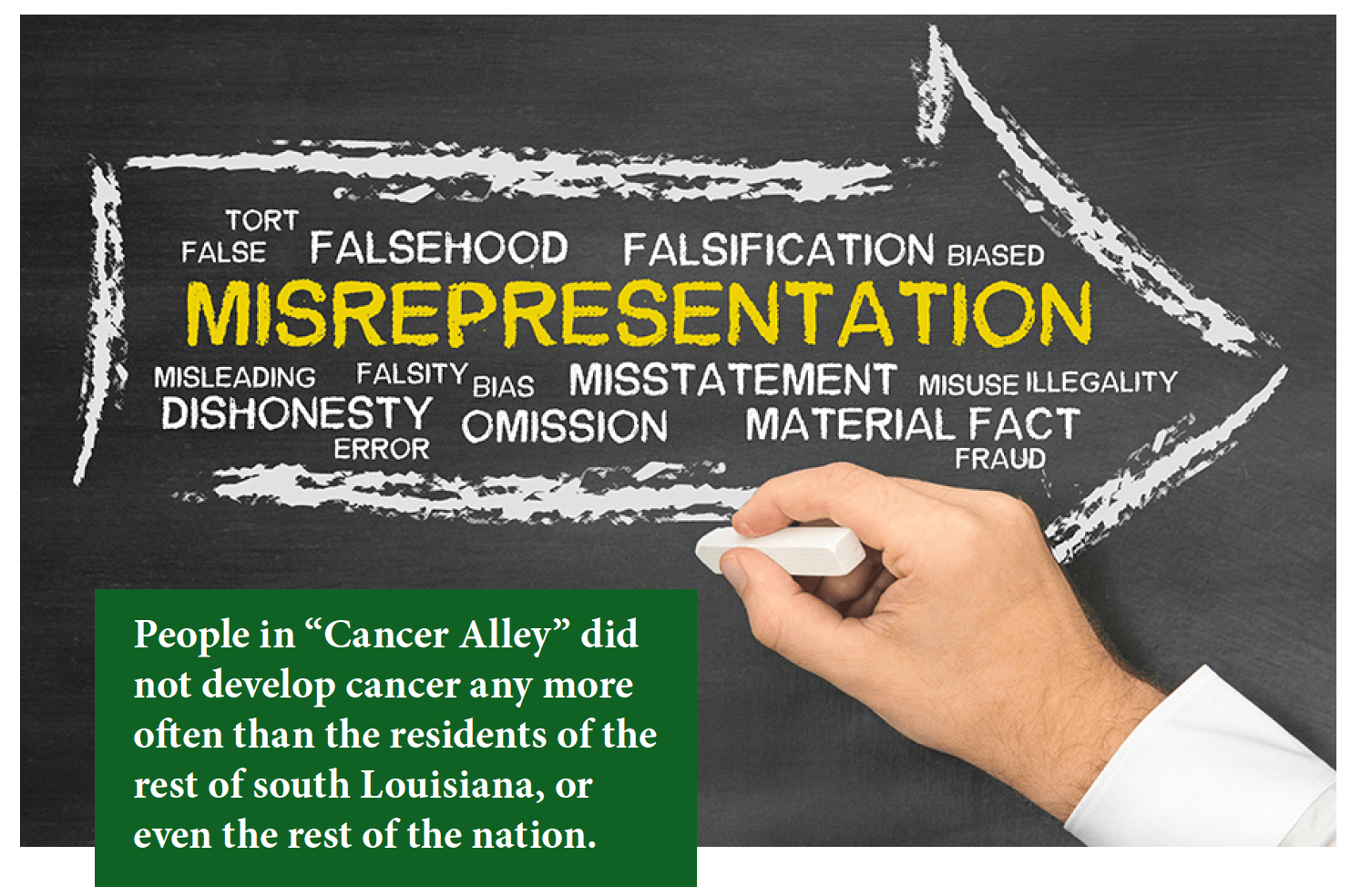
“This is the epitome of environmental racism,” Varshini Prakash, co-founder of the activist group Sunrise Movement, told The Hill. “Biden was elected on a climate mandate rooted in racial and environmental justice, and we demand he fulfill his campaign promise by directing the army corps to revoke the federal permits on this plant.”21
EJ opponents of the project have gone so far as to point to high rates of COVID-19 in the area’s minority communities during the early phases of the pandemic as a reason to block construction of the facility.
Since COVID-19 is a communicable disease that has nothing to do with the proposed industrial complex, invoking the coronavirus serves the transparent purpose of stoking fears among local residents.22
The campaign against the Louisiana project foreshadows future conflicts that will be waged to “protect” minorities from the scourges of social mobility and self-reliance. In this way, EJ complements the left’s anti-school choice efforts, which deny low-income children access to higher-quality K-12 education. Better to use environmental justice, critical race theory and other self-serving tools of the ruling class to keep millions of people perpetually dependent on government handouts, thereby ensnaring them in a form of state-sanctioned human bondage.
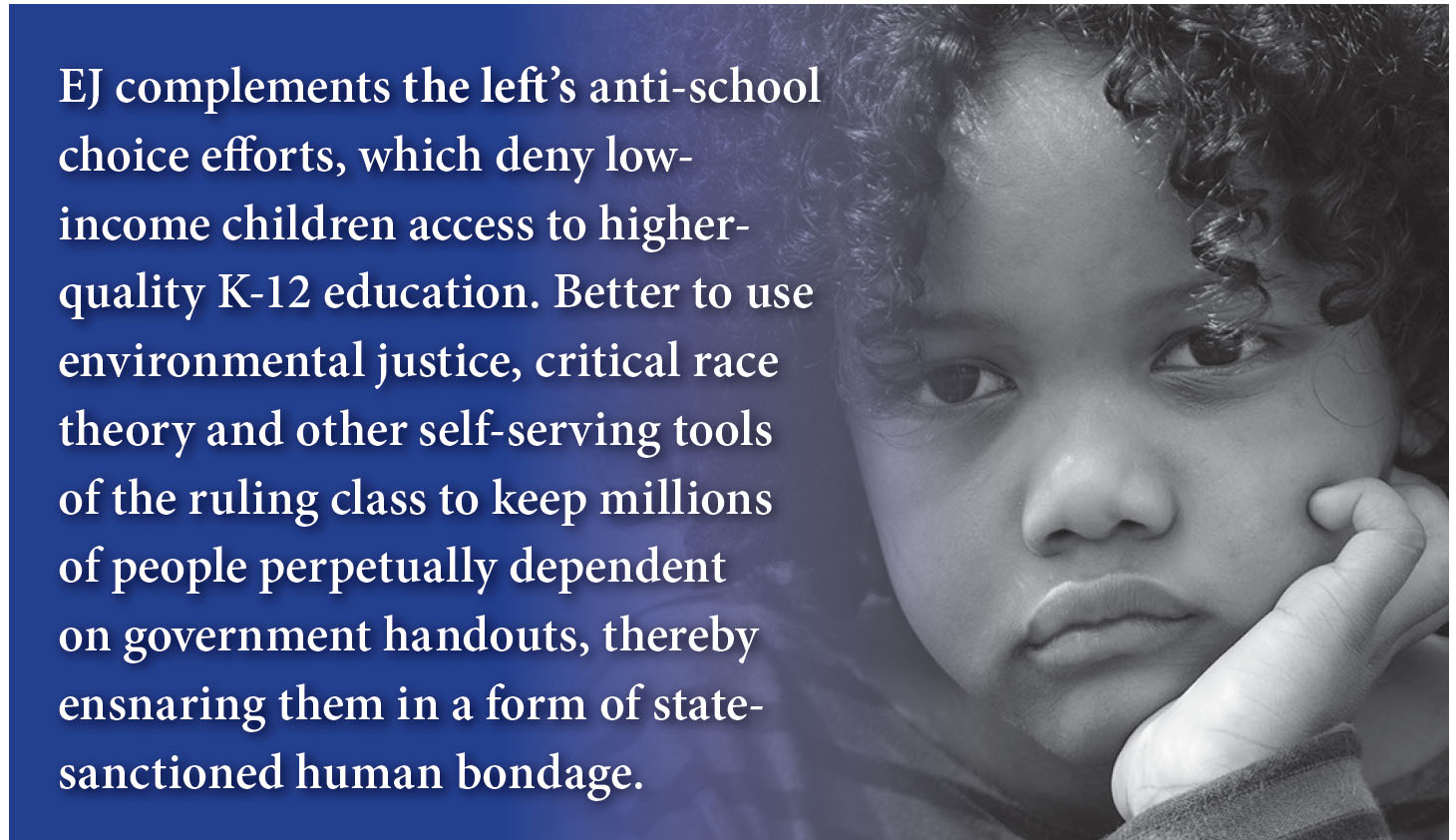
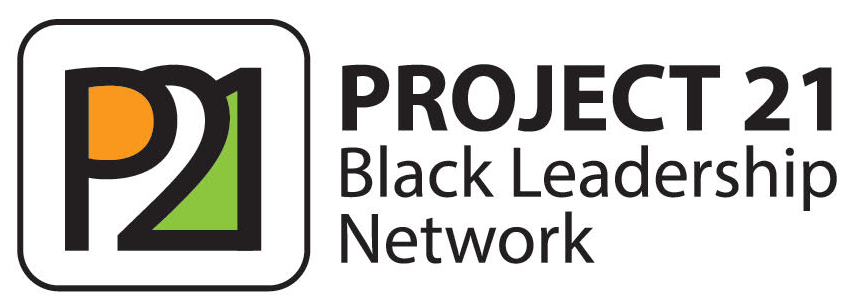
What We Believe
We believe that so-called “Environmental Justice” is — like critical race theory — merely a means for advancing a radical, Big Government agenda, not an authentic effort to help African Americans.
The environmental movement has a long been indifferent — or even hostile to — the needs of minority citizens.
Sierra Club founder John Muir, for example, once described an African American couple as “very dirty… the most diseased and incurable dirt that I ever saw, evidently desperately chronic and hereditary.”23
Other early Sierra Club leaders, such as David Starr Jordan, were white supremacists who supported pseudoscientific eugenics programs. Jordan, for example, advocated forced sterilization of black, Hispanic and Indigenous women and women with disabilities. Research and model laws developed by his Human Betterment Foundation were used as the basis for Nazi Germany’s eugenics legislation.24
Perhaps not surprising, environmental organizations have historically been extremely white. A 2014 study of 293 environmental nonprofits, grantmaking foundations and government agencies found that while minorities made up 38% of the U.S. population, just 16% of the staff and board members of these institutions were people of color.25 Minority representation in the broader environmental movement is likely much lower: Just 3.9% of environmental nonprofits surveyed in 2018 provided racial diversity information.26
The major environmental organizations didn’t start addressing environmental issues affecting black communities until 1990, and only did so then because they were shamed into it. That year, Richard Moore of the SouthWest Organizing Project sent letters — signed by 100 leaders of color — to the “Big 10” environmental organizations, accusing them of “racist and exclusionary practices.”27
At the time, the Environmental Defense Fund’s Fred Krupp defended his organization, arguing that the movement’s lack of diversity was due to a lack of interest by blacks in environmental issues.28
Since then, the nation’s environmental organizations and agencies have applied the rhetoric of environmental justice to nearly every environmental issue — from climate change to wilderness designation — to increase black interest and to weaponize EJ to advance their radical agenda.
The Fish and Wildlife Service — in an apparent attempt to use EJ rhetoric to cloak its expansion of wilderness designations — hilariously asserts: “Environmental Justice means that your economic status or race does not determine whether your neighborhood gets a national wildlife refuge.” Of course, an “environmental injustice” would mean precisely the same thing: Residential areas are never designated national wildlife refuges.29
Environmental groups also claim that climate change is an “environmental justice” issue because — among other things — extreme weather events could cause temporary power outages that fall disproportionately on people of color.30 They’re apparently not as concerned about the long-term power outages experienced by black Americans when the left’s greenhouse gas regulations make power unaffordable.
We believe that real “environmental justice” should be defined not just as the fair treatment of all people with respect to environmental impacts, but also fair treatment with respect to regulatory impacts. Job losses and price increases caused by regulation almost always fall heaviest on the poor, a significant portion of whom are black and Hispanic.
The Green New Deal, for example, which seeks to radically reduce U.S. reliance of fossil fuels to address climate change, would increase the cost of household electricity an average of 30%, irrespective of one’s ability to pay.31 While middle- and high-income Americans are able to afford such increases, those in lower-income brackets often must choose between paying higher electric prices to heat and light their homes and paying for food, prescription medications and gas for their cars.
Because government regulations disproportionately impact minority communities, Project 21 proposes that all new federal regulations be required to undergo “Minority Impact Assessments” to ensure they don’t impose undue hardship on minorities.32
We believe that free competitive enterprise and limited government have better served the interests of black Americans than the heavy hand of government upon which EJ programs rely.
It was the federal government that forced a million mostly black Americans out of their homes to construct the interstate highway system.33 It was the federal government that established federal minimum wage laws, such as through the Davis-Bacon Act, that were explicitly created to preserve the jobs of whites at the expense of blacks.34
In contrast, black Americans prospered under President Donald Trump’s more decentralized, less regulatory policies. Black employment and the black labor participation rate reached record highs, while a record one million blacks had pulled themselves out of poverty prior to the COVID-19 pandemic.35
We believe that black Americans must reject efforts to exploit “Environment Justice” to advance a radical socialist agenda harmful to their communities.
When it comes to helping Black America, positive actions speak louder than words.
For a complete list of participants in Project 21, please visit:
NationalCenter.org/Project-21
REFERENCES
1 “EPA Administrator Announces Agency Actions to Advance Environmental Justice,” EPA Press Office (Apr. 7, 2021), available at https://www.epa.gov/newsreleases/epa-administrator-announces-agency-actions-advance-environmental-justice (last accessed Mar. 21, 2022).
2 “Learn About Environmental Justice,” United States Environmental Protection Agency, available at https://www.epa.gov/environmentaljustice/learn-about-environmental-justice (last accessed Mar. 21, 2022).
3 Ibid.
4 William J. Clinton, Executive Order 12898 of February 11, 1994: “Federal Actions to Address Environmental Justice in Minority Populations and Low Income Populations,” Presidential Documents, Federal Register, Vol. 59, No. 32 (Feb. 16, 1994), available at https://www.archives.gov/files/federal-register/executive-orders/pdf/12898.pdf (last accessed Mar. 21, 2022).
5 “Learn About Environmental Justice,” United States Environmental Protection Agency, available at https://www.epa.gov/environmentaljustice/learn-about-environmental-justice (last accessed Mar. 21, 2022).
6 Ibid
7 Joseph R. Biden, Jr., Executive Order 14008: Executive Order on “Tackling the Climate Crisis at Home and Abroad,” White House (Jan. 27, 2021), available at https://www.whitehouse.gov/briefing-room/presidential-actions/2021/01/27/executive-order-on-tackling-the-climate-crisis-at-home-and-abroad (last accessed Mar. 21, 2022).
8 “EPA Administrator Announces Agency Actions to Advance Environmental Justice,” EPA Press Office (Apr. 7, 2021), available at https://www.epa.gov/newsreleases/epa-administrator-announces-agency-actions-advance-environmental-justice (last accessed Mar. 21, 2022).
9 H.R. 1319: American Rescue Plan Act of 2021, 117th Congress (Mar. 11, 2021), available at https://www.congress.gov/bill/117th-congress/house-bill/1319/text (last accessed Mar. 21, 2022).
10 “EPA Announces $50 Million to Fund Environmental Justice Initiatives Under the American Rescue Plan,” EPA Press Office (June 25, 2021), available at https://www.epa.gov/newsreleases/epa-announces-50-million-fund-environmental-justice-initiatives-under-american-rescue (last accessed Mar. 21, 2022).
11 Nicholas William Targ and Indigo Brown, “Environmental Justice in the Biden Administration: Early Actions Draw First Bold Lines,” Holland & Knight (Apr. 2021), available at https://www.hklaw.com/en/insights/publications/2021/04/environmental-justice-in-the-biden-administration (last accessed Mar. 21, 2022).
12 “New Report Shows How President Biden Can Implement His Justice40 Commitment to Tackling Environmental Racism,” Center for American Progress (June 22, 2021), available at https://www.americanprogress.org/press/release-new-report-shows-president-biden-can-implement-justice40-commitment-tackling-environmental-racism/ (last accessed Mar. 21, 2022).
13 “Fiscal Year 2022 Top Management Challenges,” Office of Inspector General, U.S. Environmental Protection Agency (Nov. 12, 2021), available at https://www.epa.gov/system/files/documents/2021-11/certified_epaoig_20211112-22-n-0004.pdf (last accessed Mar. 21, 2022).
14 “Fiscal Year 2022: Justification of Appropriation Estimates for the Committee on Appropriations,” U.S. Environmental Protection Agency (May 2021), available at https://www.epa.gov/system/files/documents/2021-07/fy22-cj-04-epm.pdf (last accessed Mar. 21, 2022).
15 Harry Jackson, “Thomas Jefferson High School Students and Parents are Fighting Changes to Admissions Standards. Here’s Why,” The Washington Post (Mar. 10, 2021), available at https://www.washingtonpost.com/opinions/2021/03/10/thomas-jefferson-high-school-students-parents-are-fighting-changes-admissions-standards-heres-why/ (last accessed Mar. 21, 2022).
16 Bonner R. Cohen, “Inspector General Faults Obama EPA’s Response to Flint Water Crisis,” The Heartland Institute (Sep. 6, 2018), available at https://www.heartland.org/news-opinion/news/inspector-general-faults-obama-epas-response-to-flint-water-crisis (last accessed Mar. 21, 2022).
17 Emily Spilman, “Environmental Racism: A Public Health Crisis, Environmental Working Group” (Feb. 24, 2021), available at https://www.ewg.org/news-insights/news/environmental-racism-public-health-crisis (last accessed Mar. 21, 2022).
18 John McQuaid, “‘Cancer Alley’: Myth or Fact?,” New Orleans Times-Picayune (May 24, 2000, updated Oct. 31, 2019), available at https://www.nola.com/news/politics/article_6b4bcb58-0778-5374-817b-3929a8fc4b01.html (last accessed Mar. 21, 2022).
19 “Formosa Selects St. James Parish for $9.4 Billion Louisiana Project,” Biz New Orleans (Apr. 24, 2018), available at https://www.bizneworleans.com/formosa-selects-st-james-parish-for-9-4-billion-louisiana-project/ (last accessed Mar. 21, 2022).
20 St. James Parish, LA, Data USA, available at https://datausa.io/profile/geo/st-james-parish-la (last accessed Mar. 21, 2022).
21 Jenna Romaine, “Activists Urge Biden to Halt New Plastics Plants in ‘Cancer Alley,’” The Hill (May 18, 2021), available at https://thehill.com/changing-america/sustainability/environment/554067-activists-urge-biden-to-halt-new-plastics-plants (last accessed Mar. 21, 2022).
22 Ibid
23 Justin Nobel, “The Miseducation of John Muir,” Atlas Obscura (July 26, 2016), available at https://www.atlasobscura.com/articles/the-miseducation-of-john-muir (last accessed Mar. 21, 2022).
24 Michael Brune, “Pulling Down Our Monuments,” Sierra Club (July 22, 2020) available at https://www.sierraclub.org/michael-brune/2020/07/john-muir-early-history-sierra-club (last accessed Mar. 21, 2022).
25 Dorceta E. Taylor, Ph.D., “The State of Diversity in Environmental Organizations, Green 2.0” (July 2014), available at https://vaipl.org/wp-content/uploads/2014/10/ExecutiveSummary-Diverse-Green.pdf (last accessed Mar. 21, 2022).
26 Dorceta E. Taylor, Sophia Paul and Ember McCoy, “Diversity, Equity, and Inclusion and the Salience of Publicly Disclosing Demographic Data in American Environmental Nonprofits, Sustainability” (Oct. 3, 2019), available at https://www.mdpi.com/2071-1050/11/19/5491 (last accessed Mar. 21, 2022).
27 Marty Durlin, “The Shot Heard Round the West,” High Country News (Feb. 1, 2010), available at https://www.hcn.org/issues/42.2/the-shot-heard-round-the-west (last accessed Mar. 21, 2022).
28 Dorceta E. Taylor, Sophia Paul and Ember McCoy, “Diversity, Equity, and Inclusion and the Salience of Publicly Disclosing Demographic Data in American Environmental Nonprofits,” Sustainability (Oct. 3, 2019), available at https://www.mdpi.com/2071-1050/11/19/5491 (last accessed Mar. 21, 2022).
29 Martha Williams, “Working Toward Environmental Justice, U.S. Fish & Wildlife Service” (Aug. 18, 2021), available at https://www.fws.gov/story/2021-08/working-toward-environmental-justice (last accessed Mar. 21, 2022).
30 Charlotte Huff, “Growing Power Outages Pose Grave Threat to People Who Need Medical Equipment to Live,” NPR (May 15, 2021), available at https://www.npr.org/sections/health-shots/2021/05/15/996872685/growing-power-outages-pose-grave-threat-to-people-who-need-medical-equipment-to- (last accessed Mar. 21, 2022).
31 Kevin D. Dayaratna, Ph.D. and Nicolas D. Loris, “Assessing the Costs and Benefits of the Green New Deal’s Energy Policies,” The Heritage Foundation (July 24, 2019), available at https://www.heritage.org/sites/default/files/2019-07/BG3427.pdf (last accessed Mar. 21, 2022).
32 “Black Leaders Urge ‘Minority Impact Assessments’ for All New Federal Regulations to Prevent Disparate Impact,” Project 21 of The National Center for Public Policy Research (July 23, 2018), available at https://nationalcenter.org/project21/2018/07/23/black-leaders-urge-minority-impact-assessments-for-all-new-federal-regulations-to-prevent-disparate-impact/ (last accessed Mar. 21, 2022).
33 Liam Dillon and Ben Poston, “The Racist History of America’s Interstate Highway Boom,” Los Angeles Times (Nov. 11, 2021), available at https://www.latimes.com/homeless-housing/story/2021-11-11/the-racist-history-of-americas-interstate-highway-boom (last accessed Mar. 21, 2022).
34 John Frantz, “Davis-Bacon: Jim Crow’s Last Stand,” Foundation for Economic Education, February 1, 1994 available at https://fee.org/articles/davis-bacon-jim-crows-last-stand/ as of March 22, 2022.
35 Scott Turner, “African Americans and the Economy Under Trump,” National Review (July 12, 2021), available at https://www.nationalreview.com/2021/07/african-americans-and-the-economy-under-trump/ (last accessed Mar. 21, 2022).




